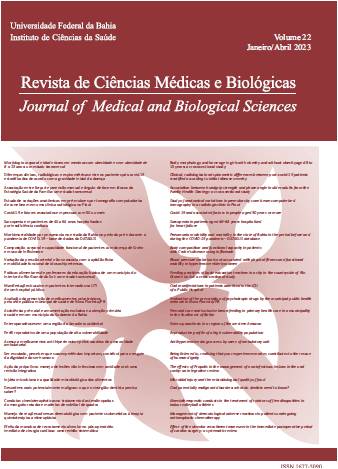Body composition and functional capacity in patients with Crohn's disease using Infliximab
DOI:
https://doi.org/10.9771/cmbio.v22i1.51574Keywords:
Crohn Disease; Body Composition; Muscle Strength; InfliximabAbstract
Rationale: the use of anti-TNFα therapy, such as Infliximab (IFX), in patients with Chron's disease (CD) can lead to changes in body composition. Objective: to evaluate the body composition and functional capacity of patients with CD. Method: Cross-sectional study with patients with CD in clinical remission using IFX. For anthropometric evaluation, it was measured: weight, height and waist circumference; functional capacity by the hand grip strength test and body composition by bioelectric impedance. After that, the fat-free mass index and body fat index were calculated. Continouns variables were analyzed by Pearson or Spearman coefficient. For the multiple linear regression model, the time of use of IFX was used as a dependent variable and waist circumference, fat-free mass index, phase angle and handgrip strength were used as independent variables. Results: forty-three patients were evaluated, with an average of 43.1± 13.5 years of age. Of the total, 44.2% were overweight and 44.2% had increased waist circumference, 58.1% were classified with high to very high fat-free mass, 30.2% were below the adequacy parameter for fat-free mass index and 11.6% had reduced functional capacity. Conclusion: overweight, as well as increased waist circumference and body fat, is common in CD patients in clinical remission using Infliximab. Most patients had preserved functional capacity, however there wasn’t association with time of use of IFX.
Downloads
Downloads
Published
How to Cite
Issue
Section
License
Copyright (c) 2023 Journal of Medical and Biological Sciences

This work is licensed under a Creative Commons Attribution 4.0 International License.
The Journal of Medical and Biological Sciences reserves all copyrights of published works, including translations, allowing, however, their subsequent reproduction as transcription, with proper citation of source, through the Creative Commons license. The periodical has free and free access.


